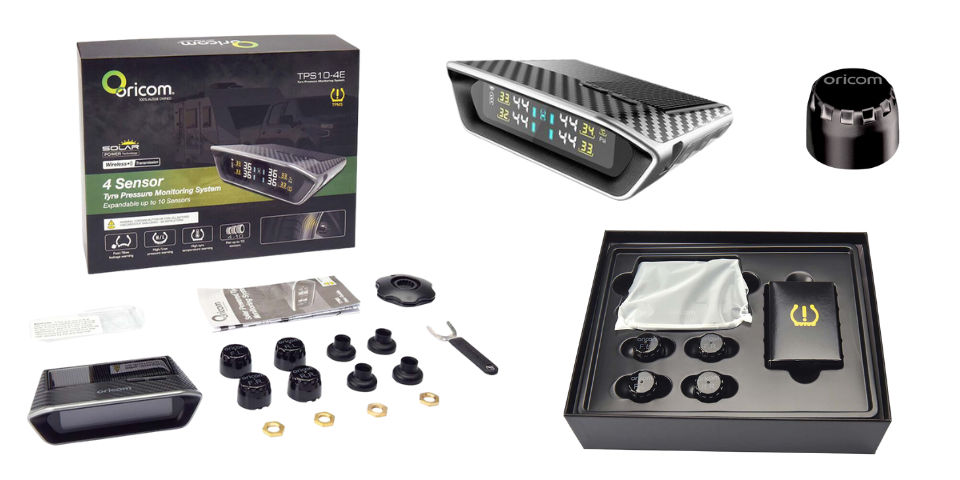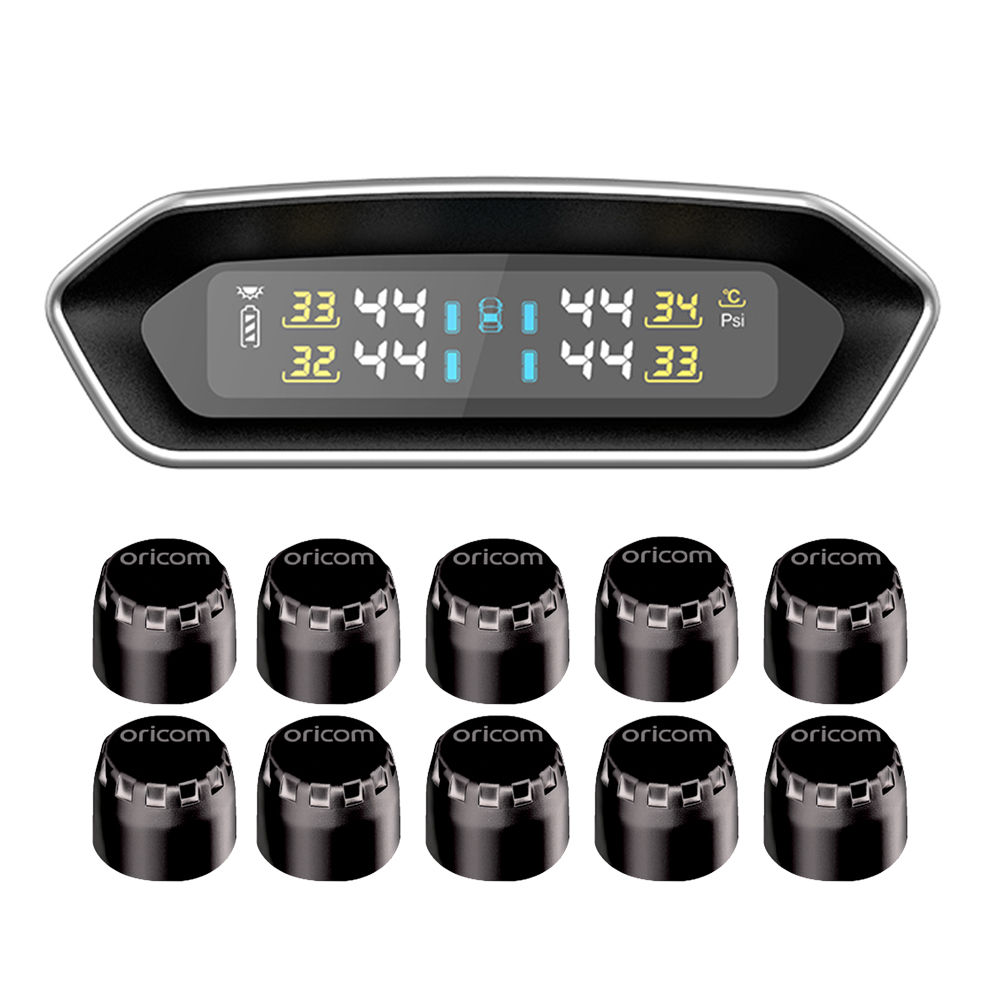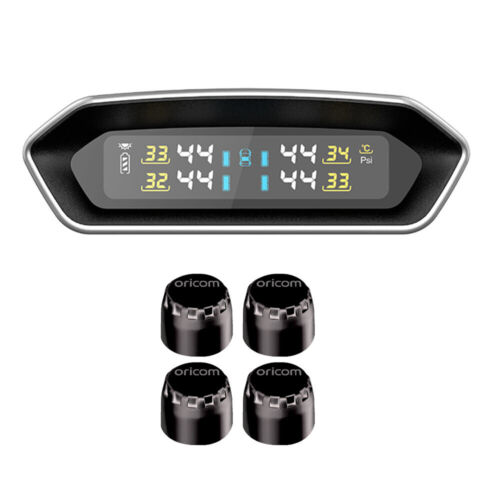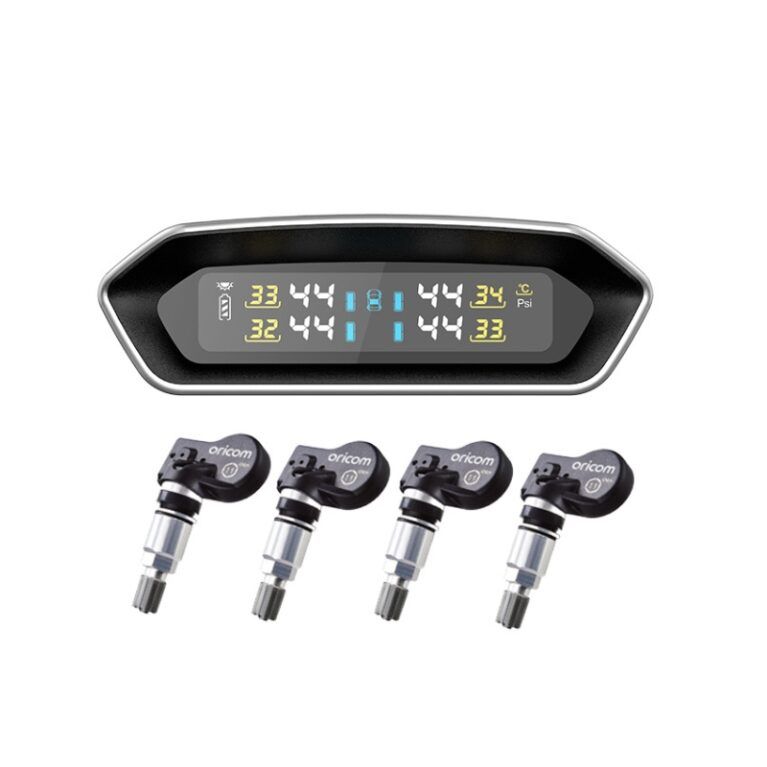
Oricom Tyre Pressure Monitoring System (TPMS) Review
Tired of the constant worry that your vehicle’s tyres might be underinflated or overheating?
The Oricom Tyre Pressure Monitoring System offers a solution to this problem.
In this review article, we’ll delve into its systems and products, exploring their features, pros, cons, and much more.
By the end of this article, you’ll have all the information you need to make an informed decision about which Oricom TPMS product suits your needs best.
Pros & Cons
Rating: 4.0/5
Pros
- Replaceable batteries with 2 years of battery life
- IPX7 waterproof rating
- Wireless transmission between sensor and display unit
- Customisable threshold values
- Auto-brightness for easy display visibility
- Sleek and compact design
- Real-time monitoring
- Visual and audio alarms for immediate alerts
- Intelligent sleeping mode ensures prolonged battery life
- Sensor failure warning for added safety
- 12-month warranty for peace of mind
Cons
- May be perceived as a bit pricey for budget-conscious consumers
- Some users may desire longer battery life
Oricom TPMS systems utilise both external and internal sensors to meticulously monitor your tyre pressure and temperature.
The external sensors attach to your tyre’s valve stems, while the internal sensors are discreetly installed within the tyres themselves.
These sensors wirelessly transmit real-time data to a user-friendly display unit, offering a seamless way to stay informed about your tyre’s vital statistics.
Oricom TPMS Models
TPS10-10E

This model comes with ten external sensors and can simultaneously connect to the solar-powered LCD display unit. Ideal for larger vehicles or fleets.
TPS10-4E

Featuring four external sensors, this model can expand to support up to ten sensors through the solar-powered LCD display unit. A versatile choice.
TPS10-6E

Equipped with six external sensors, this model also supports up to ten sensors through the solar-powered LCD display unit. Suitable for mid-sized vehicles.
TPS10-4I

With four internal sensors, this model provides flexibility for those who prefer internal monitoring while supporting up to ten sensors through the solar-powered LCD display unit.
Features Comparison Table
| Features | TPS10-10E | TPS10-4E | TPS10-6E | TPS10-4I |
|---|---|---|---|---|
| Number of Sensors | 10 | 4 (expandable) | 6 (expandable) | 4 (expandable) |
| Sensor Type | External | External | External | Internal |
| Temperature Monitoring | Yes | Yes | Yes | Yes |
| High/Low Pressure Warning | Yes | Yes | Yes | Yes |
| Real-time Monitoring | Yes | Yes | Yes | Yes |
| Leak Detection | Yes | Yes | Yes | Yes |
| Solar Powered LCD Display | Yes | Yes | Yes | Yes |
| Anti-theft Sensors | — | — | — | — |
Common Issues Reported By Users
Although Oricom TPMS systems offer numerous benefits, some users have reported a handful of typical problems. It’s essential to have knowledge of these potential issues:
Difficulty Installing The Sensors
Some users have encountered challenges during sensor installation. It’s advisable to carefully follow the provided instructions or seek professional assistance if needed.
Inaccurate Readings
Occasionally, users have reported inaccurate tyre pressure readings. To mitigate this, ensure proper sensor placement and calibration.
False Alarms
False alarms can be frustrating. Be sure to set your warning thresholds according to your vehicle’s specifications to minimise false alerts.
Display Visibility
While Oricom TPMS displays are generally user-friendly, some users have mentioned concerns about screen visibility in certain lighting conditions.
Factors To Consider When Choosing A TPMS System
Selecting the right TPMS system requires careful consideration of several factors:
Number Of Sensors Required
The number of sensors you need depends on your vehicle’s configuration.
For multi-axle vehicles like caravans or trailers, opt for systems like the TPS10-10E with support for multiple sensors. For standard passenger vehicles, models like the TPS10-4E are suitable.
Display Size
Consider the size of the display, especially if you have specific visibility requirements.
A larger display, as seen in the TPS10-10E, can be advantageous for those with poor eyesight or a preference for quick, glanceable information.
Features
Evaluate the features that matter most to you.
Are you in need of programmable warning thresholds to suit your driving habits? Does a sleep mode or solar charging capability matter to you?
Understanding your priorities will guide you towards the right choice.
Price
Lastly, be sure to take your budget into consideration. TPMS systems vary in price, ranging from approximately $200 to $500.
Oricom offers options that cater to different budgets, ensuring you find the ideal balance between cost and functionality.
Conclusion
Oricom offers one of the best TPMS in Australia for monitoring your vehicle’s tyre pressure and temperature in real-time.
With a range of models to choose from, you can select the one that best suits your needs, whether you have a large vehicle, a small car, or anything in between.
Although users report some common issues, Oricom TPMS generally provides greater peace of mind and safety, making these inconveniences minor in comparison.
So, take control of your tyre health and enjoy worry-free driving with the Oricom TPMS.

Louis
I'm Louis, an engineer passionate about helping Australians choose better tyres for their vehicles!
